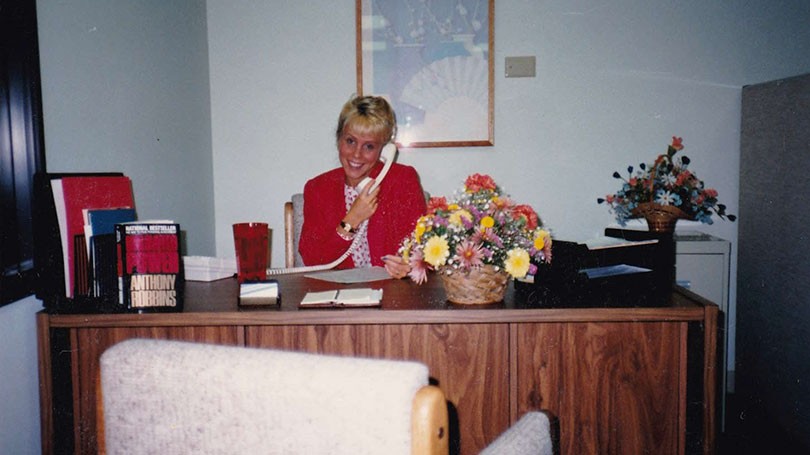Starting a Recruiting Business in the Middle of the Recession? Why not.
Everyone thought Peg Olson was crazy when she decided to launch her own recruiting company, jPEG Executive Search, in 2009, just as the economy had collapsed. “Many businesses were downsizing, and hiring was the last thing on their minds, but after twenty-plus years as a recruiter, I knew I could turn this into an opportunity,” Olson says. Why? “Because I had a rich bank of personal and professional contacts – and I had LinkedIn.”
Taking leaps of faith is something Olson is familiar with. “After college, I sold everything I had and headed out to California to take a commission-only job as a recruiter,” she says. “It was hard, but somehow I knew it would all work out.” And it did. Peg turned that commission-only gig into a fruitful recruiting career of 20+ years at companies like TMP Worldwide, ETrade, and United Healthcare.

And in 2009, despite the global economic uncertainty (not to mention her mortgage), she got that same “leap of faith” feeling and knew it was time to launch her own recruiting business. “After 6 months of prep, without tapping into my savings or taking out a loan, I bootstrapped my recruiting business,” Olson says. Here’s how she did it.
1. Do your research and find your niche.
Olson is a big believer in figuring out where your expertise lies, and then building the marketing for your recruiting business around your strong suits. In her case, she did market research on herself, sending InMails to her LinkedIn connections and asking them to give her feedback on her strengths.
The feedback, combined with her own thoughts on her business, narrowed down her niche: Olson has always been passionate about healthcare and she loves new technologies, so she defined her market as an executive recruiter for emerging healthcare technology companies.
2. Build your presence.
People who need to hire great talent need to find you first. Olson uses LinkedIn as her online “storefront,” where she meets new connections and stays in touch with current ones, collects recommendations to show to prospective clients, and shares news from the recruiting industry.
3. Be social.
Olson builds buzz around her business, and strengthens her network, by constantly sharing news and ideas. She uses Newsle and LinkedIn to keep up with news from her clients’ businesses, and then shares that good news with her LinkedIn connections. Being social pays off, both in the long term and the short term: “I followed someone on Twitter whom I had been trying to connect with on LinkedIn for months,” Olson says. “Five minutes later, he sent me an InMail on LinkedIn and said, ‘I can’t believe we have so many contacts in common.’ Then he became a client!”
4. Use Company Pages as a starting point to find clients.
“I built my business by sourcing clients, not candidates,” Olson says. By that she means she finds clients who fit into her niche – emerging healthcare companies – then helps them find their C-suite leaders. She researches companies that are a good fit for her business, using LinkedIn’s targeted searches, and then reaches out to leadership teams and venture capital partners using InMails.
“When you target InMails carefully – matching what you do as a recruiter to the business needs – people will read your messages,” Olson says, noting that she sees open rates as high as 80% for her InMails.
5. Leverage existing contacts to put money in your pocket right away.
As soon as you open doors to your new recruiting business, reach out to connections to start drumming up business. As Olson sent out InMails asking for advice on launching her business, she got leads from longtime connections asking for help in conducting personal branding sessions. “Getting these projects helped me pay for my new website and get my company off the ground,” Olson says.
6. When you launch, shout it from the rooftops.
Don’t keep the new business a secret – tell the world. When Olson launched jPEG, she sent announcements via InMails and emails, inviting people to visit her LinkedIn profile and her website, and posted a status update in her LinkedIn Company Page.
“Breaking the news about my business helped me get a bunch of new recommendations for my profile, not to mention my connections cheering me on,” Olson says. And five years after starting her company in a disastrous economic climate, her leap of faith was unequivocally a success.
To receive blog posts like this one straight in your inbox, subscribe to the blog newsletter.
Topics: Recruiting tips
Related articles



